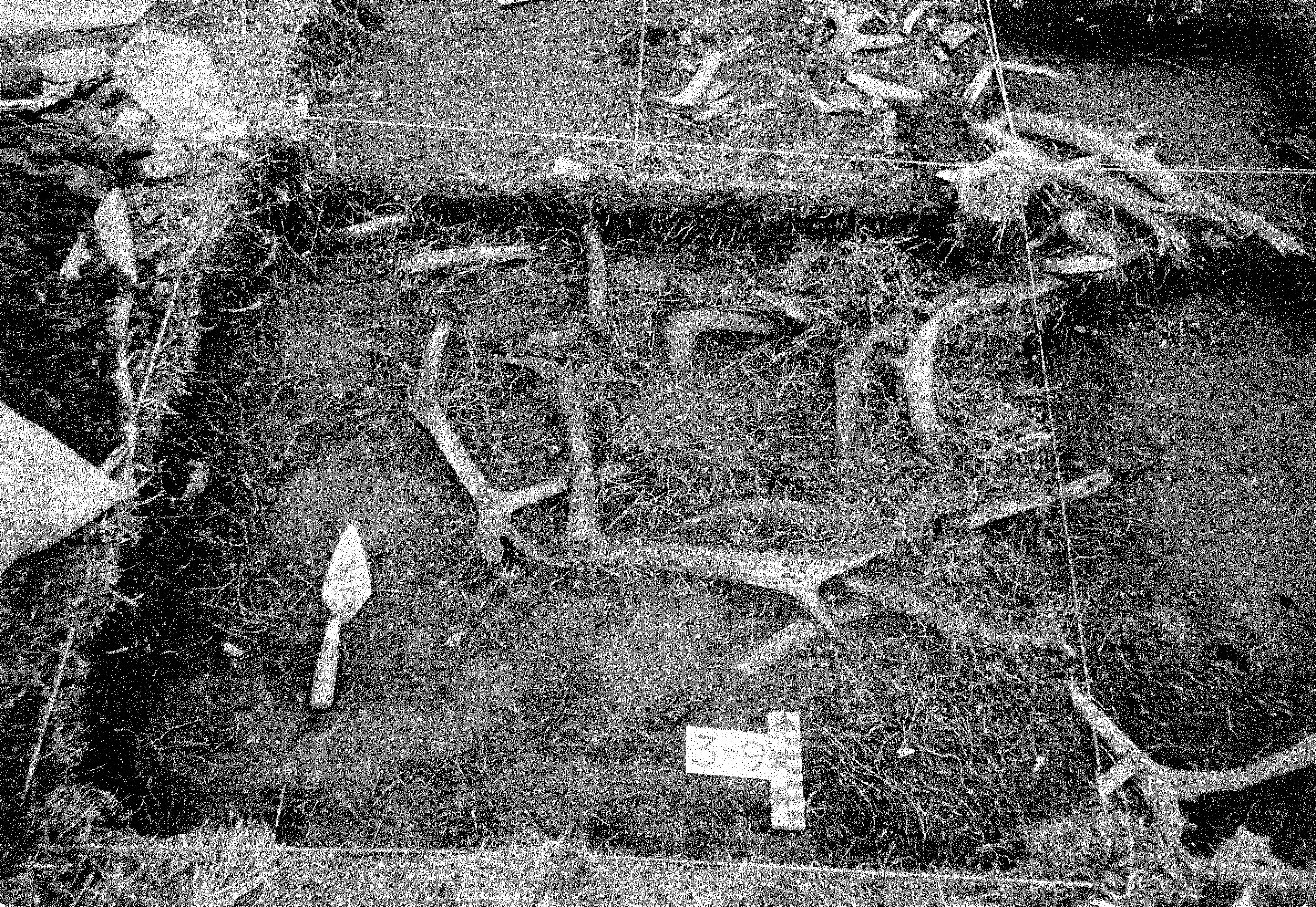New exhibit explores museum collections
January 18, 2017
Theresa Bakker
907-474-6941

A new exhibit at the University of Alaska Museum of the North explores the connection between research collections and the museum science they support. "Expedition Alaska: Archaeology and Mammalogy" contains dozens of objects from decades of field work by museum researchers and their students.
Archaeology curator Josh Reuther said the exhibit highlights research made possible by the specimens preserved at the museum. “We explore the development of the museum and our departments," he said. "We also look at the regional, national and worldwide impacts that research on the collections has made.”
It isn’t just scientists at the University of Alaska who use the collections. “We work with many different types of collaborators, including local experts and international scientists, scholars and educators," Reuther said. "This allows us to ask questions about human and animal behavior and diversity. We are also interested in what environments were like in the past, how they changed and how people and animals responded to those changes.”
In addition to archaeology, the exhibit features voucher specimens collected by the museum’s mammalogy department. Curator Link Olson said museum specimens "vouch" for a particular species at the place and time it was collected. “These serve as the basis for determining the geographic ranges of species and allow research on countless aspects of their biology and natural history. And they forever remain available for scientists to test and retest hypotheses.”
The specimens at the UA Museum of the North help scientists determine the number of mammals that live in Alaska. That includes species that have shifted north as a result of climate change. As it stands, the state is home to 111 native mammal species. Of those, six species are endemic to Alaska. That means they are found nowhere else on Earth.

One of the highlights of the exhibits is a spotlight on the students who work at the museum. They participate in research at all levels, from field work to specimen preparation to rigorous research.
“It’s a suite of unique and interrelated opportunities very difficult for students to find in any other university setting,” Olson said. “Our students often parlay their experiences here into graduate or professional opportunities elsewhere.”
The collections at the UA Museum of the North represent thousands of years of cultural traditions and millions of years of biological evolution and diversity. Scientists have spent decades collecting and studying these artifacts and specimens. The new exhibit explores where they come from. It also features videos filmed on location that tell the tales of the scientists in search of clues to the region's dynamic history.

By focusing on expeditions, Reuther said, the museum can highlight fieldwork that has played a role in expanding our knowledge about the past. But it is only the beginning of the expeditionary work of archaeologists and other museum scientists. “The laboratory work is just as exciting and fundamental to acquiring knowledge and is an expedition all on its own. Many times this is where the stories get really interesting.”
The UA Museum of the North was established to research the human and biological history of Alaska. Reuther said the university’s founders understood the importance of that task. “Museums such as this one, with a long time and broad diversity of collecting, are places where answers reside in the specimens and artifacts curated within," he said.
Sometimes getting at these answers is as simple as searching a database. Or it might be as complicated as returning to the field to acquire more data. Either way, the first tool a scientist can implement is finding the right questions to ask.
Curators said the new exhibit highlights some of those questions. "Expedition Alaska: Archaeology and Mammals" is on display in the museum’s Collections Gallery.
ON THE WEB: www.uaf.edu/museum/exhibits/special-exhibits/expedition-ak/


